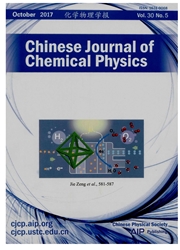

 中文摘要:
中文摘要:
与聚合物涂的声学的波浪传感器基于新涂层免职(自我装配、分子地印的技术) 拍摄的表面的反应的分析被描述,反应公式因此被推出。用真实部分砍模量,聚合物能被分类进三种类型:玻璃质的电影,玻璃质似橡胶的电影和似橡胶的电影。试验性的结果比在马丁的理论,而是速度反应不确切与计算一致的证明变细反应在有模拟的更好的坚固性。也许,它被试验性的方法和环境影响。另外,为聚合物电影的煤气的吸着的模拟被执行。,至于玻璃质似橡胶的电影和似橡胶的电影至于玻璃质的电影,有增加电影厚度的锯传感器反应增加,和在传感器反应和气体的集中之间的关系是相当线性的,在传感器敏感和气体的集中之间的关系是很复杂的。最终计算的结果显示在传感器反应和频率之间的关系不由于聚合物的粘弹性的性质总是是线性的。
 英文摘要:
英文摘要:
An analysis of the response of surface acoustic wave sensors coated with polymer film based on new coating deposition (self-assemble and molecularly imprinted technology) is described and the response formulas are hence deduced. Using the real part of shear modulus, the polymer can be classified into three types: glassy film, glassy-rubbery film and rubbery film, Experimental results show that the attenuation response is in better consistence with the simulation than in Martin's theory, but the velocity response does not accord with the calculation exactly. Maybe it is influenced by the experimental methods and environment. In addition, simulations of gas sorption for polymer films are performed. As for glassy film, the SAW sensor response increases with increasing fihn thickness, and the relationship between the sensor response and the concentration of gas is pretty linear, while as for glassy-rubbery flint and rubbery film, the relationship between the sensor sensitivity anti concentration of gas is very complicated. The ultimately calculated results indicate that the relationship between the sensor response and frequency is not always linear due to the viscoelastic prooerties of the polymer.
 同期刊论文项目
同期刊论文项目
 同项目期刊论文
同项目期刊论文
 期刊信息
期刊信息
